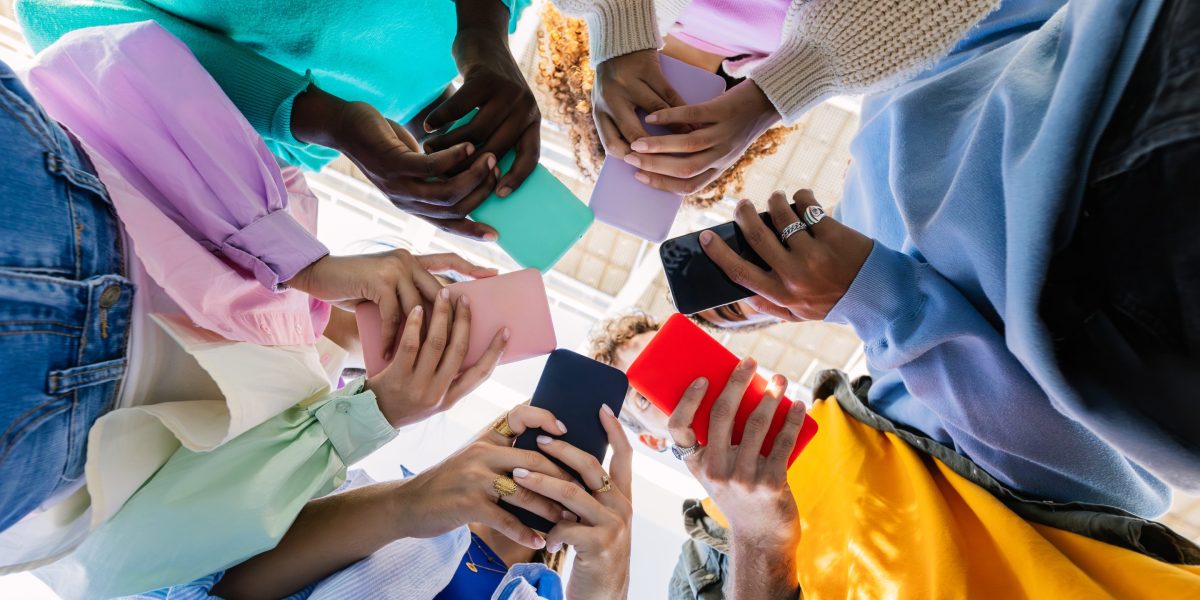

Still, Haidt’s claim—that Gen Z kids are different from their predecessors in terms of mental health because they’ve grown up on smartphones—as well as his suggestions for dialing it back, have prompted much pushback.
Frequent Haidt critic Andrew Przybylski, an Oxford professor, told Platformer, “Extraordinary claims require extraordinary evidence. Right now, I’d argue he doesn’t have that.” Chris Ferguson, at Stetson University, attempted to take some wind out of Haidt’s sails by pointing out that America’s recent suicide increase is not a phenomenon specific to teens. And Candice Odgers of the University of California Irvine, in her Nature journal critique of his book, said Haidt is adding to a “rising hysteria” around phones and that he is “telling stories that are unsupported by research.”
But Haidt and his chief researcher, Zach Rausch, are holding their ground in what Rausch calls “a normal academic debate.”
What they are trying to explain, Rausch tells Fortune, is “a very specific change that happened in a very specific time among a specific subset of kids.” Besides, he offers, “I’m totally open to the idea that maybe we’re somewhat wrong about just how much it can explain the change over the last decade. But I certainly think that we are on very strong footing to say that [smartphones and social media] have led to a pretty substantial increase in anxiety and depression and self-harm among young people.”
Here, Rausch lays out the theories of The Anxious Generation and responds to criticisms.
What is the Anxious Generation claiming?
The core idea of the book is that something changed in the lives of American young people somewhere around 2010 to 2015. “What we’re trying to explain in the book is what changed during this period to help explain why Gen Z is so different. And the specific things in which they’re different are often related to their mental health, anxiety, rates of anxiety, depression, self harm, even suicide,” says Rausch.
He and Haidt point to a slew of findings, including that the percentage of U.S. teens who say they’ve had one “major depressive episode” in the past year has increased by more than 150% since 2010, with most happening pre-pandemic. And that, among American girls between 10 and 14, emergency room visits for self-harm grew by 188% during that period, while deaths by suicide increased by 167%; for boys, ER visits for self-harm increased by 48% and suicide by 91%.
“We see this in the United States,” Rausch adds. “We see this across the Anglosphere, the English speaking countries, and well-being and mental health measures in many countries around the world are showing similar declines around the same time. So that’s the big thing that we’re trying to address.”
What they theorize is that one of the fundamental things that changed in the period in question—specifically among young people and most especially among adolescent girls—is “the movement of social life onto smartphones and social media, where now they move from spending very little time on platforms like Instagram, which came out in 2010, [to] spending upwards of four, five hours a day on these platforms by 2015.”
It’s changed the way kids relate to each other, as well as to family and strangers. “That’s what we mean by the rewiring of childhood,” says Rausch. “It is a rewiring of the way that we interact. It’s our social ecosystem and how that really changed, and that it makes it very different from other technologies. Television didn’t rewire our relationships with everybody.”
Debate has swirled around three questions
First, Rausch says, skeptics ask: Is there a mental health crisis, and to what extent does it exist? Second: Is it international or is it just happening in the United States? And third: If you agree there is a mental health crisis, what is the role of social media?
But even if you disagree that there is such a crisis, Rausch notes, “social media could still not be safe for kids, right? This is something that I feel like gets missed, like with the Surgeon General report, where the focus is all about, ‘Can it explain this huge rise?’ But there are all sorts of consumer products for kids that kill 50 kids a year that we immediately take off the market.”
Sticking points: Moral panic, lack of evidence
One consistent argument against the book, Rausch says, is that “there are a number of people who have studied media effects for a while and are very attuned to past panics around technologies, whether that be video games or comic books, and there is a justified skepticism and worry that maybe this is happening again.”
In response, he stresses, they try to make the case that, simply, “This is this time. It really is different.”
The second detail they get called out on involves the evidence that Raush and Haidt point to, by collecting every study they could find, all of which they’ve collected in public Google Documents. That amounts to “hundreds and hundreds … a lot of them low-quality, some better quality,” says Rausch. Some critics point to the studies showing correlation rather than causation between, for example, social media and mental health issues.
But doing actual experiments on young people that might show cause is tricky, he explains. “One, social media is relatively new, especially in the kind that we’re talking about, which is constantly evolving every year.” Plus, “You don’t do experiments, generally, on kids. And to do the kind of experiment that maybe you would want to do to really test this out is completely unethical and would never happen—assigning a group of kids to have one kind of childhood and another group to have another.”
It’s why arriving at a very precise, conclusive scientific claim is difficult. “And this is kind of the nature of social science,” he says, “and why there is so much debate.”
To bolster their arguments, Rausch and Haidt try to draw on various lines of evidence, including firsthand accounts from Gen Z, parents, and teachers—as well as internal documents from social media companies themselves, such as Instagram’s documentation of teen girls reporting that using the platform makes their body image and mental health worse.
The researchers have also zeroed in on their belief that social media, especially with heavy use, has “addictive-like qualities,” and will, in turn, cause withdrawal when stopped.
“A large part of the story is that we’re trying to tell about what happens when an entire group of people move their lives onto addictive-like platforms,” he says.
Other reasons for pushback
“There are camps of people that are very techno-optimist—you have a lot of faith that technology, and believe that more technology will solve the world’s problems,” Rausch says. And for those who strongly feel that way, Anxious Generation’s findings might prompt a feeling that “it’s just a little bump in the road. Things are going to get better as we make more technology to solve problems that technology creates, and we’ll kind of keep going in that direction.”
There’s also the “very real concern” of government control of social media, which Rausch calls “more of a libertarian critique.”
Finally, he says, there’s the worry that these issues are getting too much attention as compared with just-as-important subjects of other researchers—from poverty to the opioid epidemic.
But all arguments aside, he says, much of what Anxious Generation has focused on is “irrefutable.” That includes not only the correlation between heavier social media use and anxiety or depression, but the “large portion of harm that happens on these platforms,” including the rise in sextortion cases, or teens being coerced into sending explicit photos online.
And what always reassures Rausch that they’re on the right track is talking to a teen, parent, or teacher. “Whenever I have doubt,” he says, “I go to the source.”















